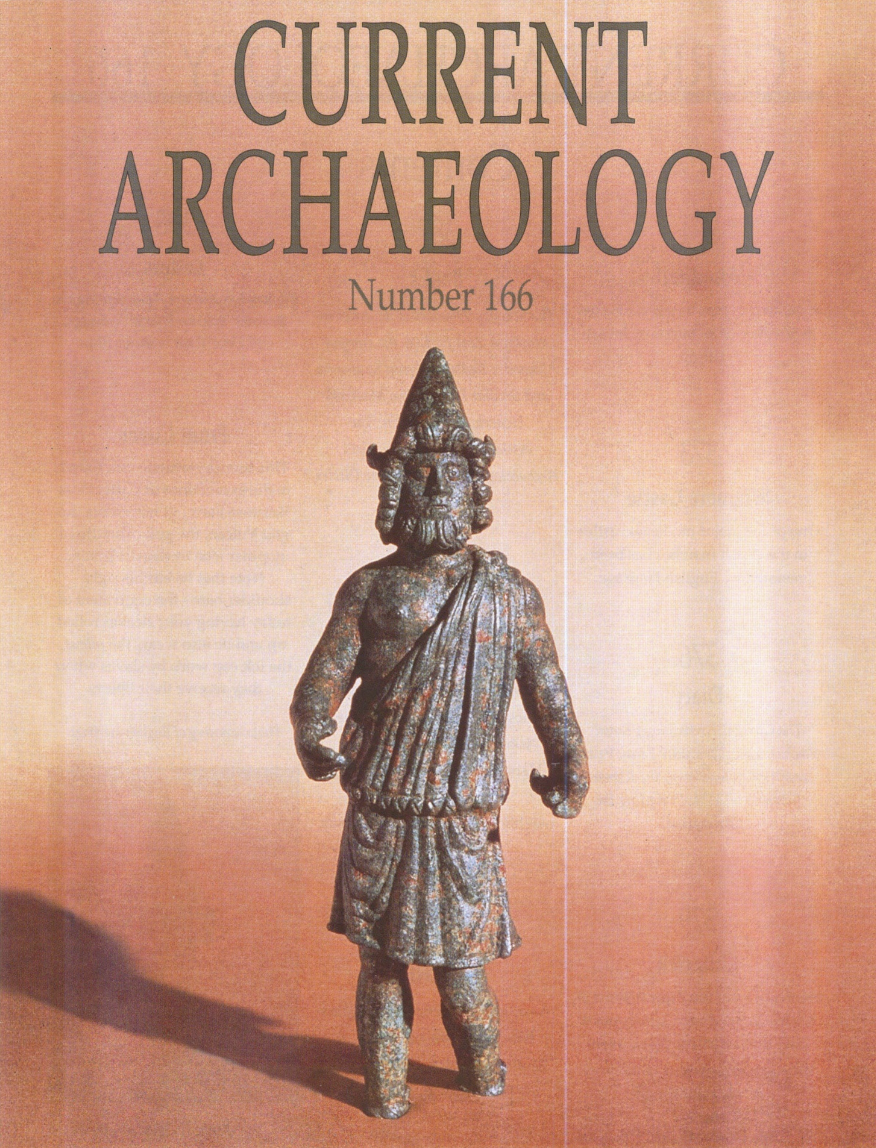This edition of Current Archaeology is very much in the classic mould, in that we have articles on prehistory, on the Romans, and on the Middle Ages, together with a look at English Heritage’s latest conservation triumph, so there is something for everyone.
We begin at the beginning, in the mesolithic. The islands off the west coast of Scotland have long been known to have a mesolithic all of their own, based on huge shell middens. But is this all there is? For the last ten years, Steven Mithen has been investigating the island of Islay,
where he has discovered a range of sites of the early hunters, but none of them associated with shell middens. A very interesting pattern of this early exploitation is beginning to emerge. On to the Romans, and to Catterick in the north of England. When in 1959 the new bypass was built, it went right through the middle of the Roman town. There were terrible scenes of devastation with buildings over 10 feet high being bulldozed away. Subsequently, numerous smaller excavations have taken place, revealing not only a Roman fort and town, but also a long straggling settlement, along the Great North Road. Now, Pete Wilson, who has conducted many of the recent excavations, has pulled all this work together for a major monograph, to be published by English Heritage: here we present a fascinating preview.
Then up to Scotland, and to the mysterious Picts. At Redcastle, on the east coast, a cemetery containing both round barrows and square barrows has recently been excavated. Was it going to be Iron Age? The dates however were later: are these square barrows in fact Pictish, so that this becomes the first occasion on which a Pictish cemetery has finally been tracked down?
One of the most common, but least known settlement types in the Middle Ages are the moated manor houses, the residences of the upper middle classes. At Wood Hall, in the south of Yorkshire, one of these manor houses has been slowly elucidated, area by area over the past ten years. Already, we have had an article in CA141 on the amazing sequence of timber bridges. Now we can reveal the full story of the development of the site from the construction of the first moat, down to its conversion into a typical farmhouse.
Finally, we take a look at Wigmore Castle, which is one of the largest castles in the Welsh marches. This has long been a dangerous ruin, but it is now the pride and joy of English Heritage, following a fashionable new restoration programme, in which little has been visibly changed. Is this really a triumph? Read all about it!

